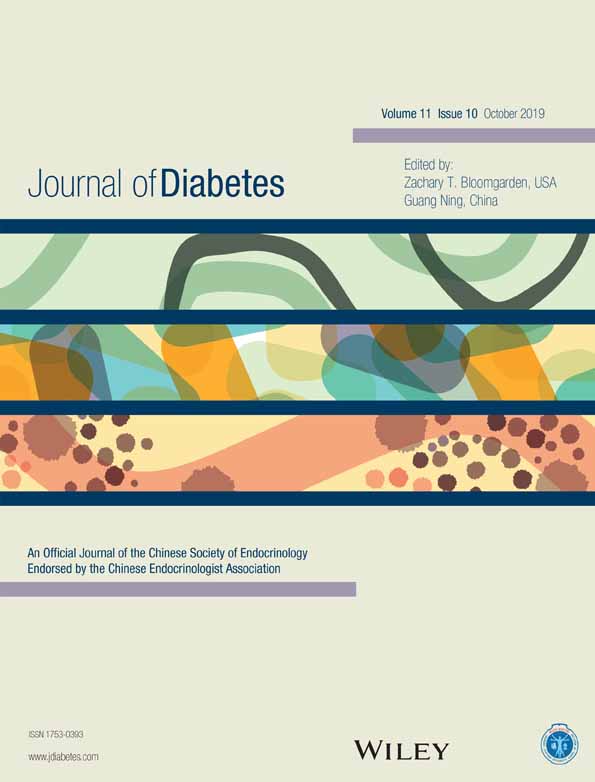Nocturnal ventricular arrhythmias are associated with the severity of cardiovascular autonomic neuropathy in type 2 diabetes
2型糖尿病患者心血管自主神经病变严重程度与夜间心律失常的相关性研究
Funding information This work was supported by grants from the National Natural Science Foundation of China Grant Award (81570737, 81570736, 81770819, 81500612, 81600632, 81703294), the National Key Research and Development Program of China (2016YFC1304804), Jiangsu Provincial Key Medical Discipline (ZDXKB2016012), the Key Research and Development Program of Jiangsu Province of China (BE2015604, BE2016606), the Fundamental Research Funds for the Central Universities (021414380422), and the Nanjing Science and Technology Development Project (201605019).
Abstract
enBackground
Cardiovascular autonomic neuropathy (CAN) is a risk factor for arrhythmias and adverse cardiovascular events, but the relationship between CAN severity and nocturnal arrhythmias needs to be clarified. This study evaluated the association between nocturnal arrhythmias and CAN severity in patients with type 2 diabetes (T2D).
Methods
In all, 219 T2D patients were recruited from January 2017 to May 2018. Subjects were classified into no CAN (NCAN), early CAN (ECAN), definite CAN (DCAN), or advanced CAN (ACAN) based on cardiovascular autonomic reflex tests (CARTs). A 24-hour electrocardiogram was recorded and daytime (0700-2300 hours) and night-time (2300-0700 hours) heartbeats were analyzed separately.
Results
After adjusting for age, the incidence of ventricular arrhythmias increased with CAN severity at night-time (18.6%, 29.9%, 36.2%, and 60.0% in the NCAN, ECAN, DCAN, and ACAN groups, respectively; Ptrend = 0.034). Patients with nocturnal ventricular arrhythmias (NVAs) had higher CART scores (2.0 ± 1.0 vs 1.5 ± 0.9; P < 0.001) and lower heart rate variability (HRV) during deep breathing (9.5 ± 5.7 vs 11.6 ± 6.6 b. p. m; P = 0.021), HRV during the Valsalva maneuver (1.2 ± 0.1 vs 1.2 ± 0.2; P = 0.006), and postural blood pressure change (−8.8 ± 15.5 vs −4.1 ± 11.2 mmHg; P = 0.023). Multivariate regression analysis revealed that CAN stage (odds ratio 1.765; 95% confidence interval 1.184-2.632; P = 0.005) was independently associated with NVAs.
Conclusions
In T2D, CAN stage was independently associated with the presence of NVAs. Early detection, diagnosis, and treatment of CAN may help predict and prevent adverse cardiovascular events and cardiovascular mortality in diabetes.
Abstract
zh摘要
背景
心血管自主神经病变(Cardiovascular autonomic neuropathy,CAN)是心律失常与心血管不良事件的危险因素,但CAN严重程度与2型糖尿病患者夜间心律失常的关系尚不明确。本研究旨在探讨2型糖尿病患者不同严重程度的CAN与夜间心律失常的关系。
方法
选取2017年1月至2018年5月采纳219例2型糖尿病患者作为研究对象。根据心血管自主神经反射试验(CARTs)得分,将患者分为正常组、早期病变组、明确诊断组和严重病变组。使用24小时动态心电图记录患者白天(7:00-23:00)和夜间(23:00-7:00)的心跳分别进行分析。
结果
校正年龄后,夜间室性心律失常发生率随CAN的严重程度增加而上升(正常组:18.6%, 早期病变组:29.9%,明确诊断组:36.2%,严重病变组:60.0%, P趋势=0.034)。此外,发生夜间室性心律失常(Nocturnal Ventricular Arrhythmias,NVA)的病人CARTs得分(2.0±1.0 vs. 1.5±0.9,P<0.001)更高;副交感神经功能相关的深呼吸心率差(9.5±5.7 bpm vs. 11.6±6.6 bpm,P=0.021)、Valsalva比值(1.2±0.1 vs. 1.2±0.2,P=0.006)显著变小,交感神经功能相关的卧立位收缩压差(-8.8±15.5 mmHg vs. -4.1±11.2 mmHg,P=0.023)显著下降。多元回归分析显示,CAN严重程度(OR=1.765,95% CI: 1.188 -2.632,P=0.005)与2型糖尿病患者夜间室性心律失常的发生独立相关。
结论
2型糖尿病患者CAN严重程度与夜间室性心律失常的发生存在独立相关性,对CAN的早期检测、诊断和治疗可能有助于预测和防止2型糖尿病患者心血管不良事件及死亡。




